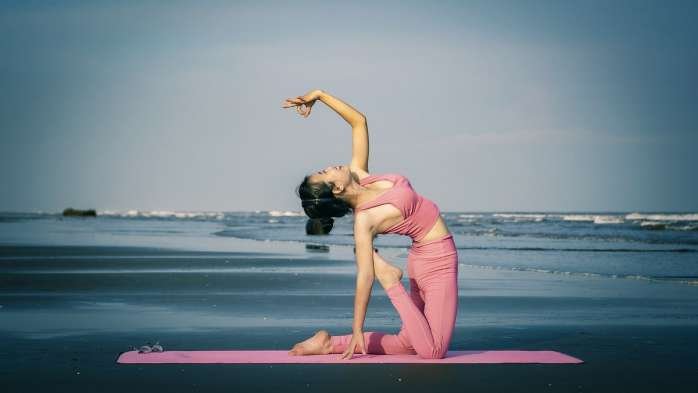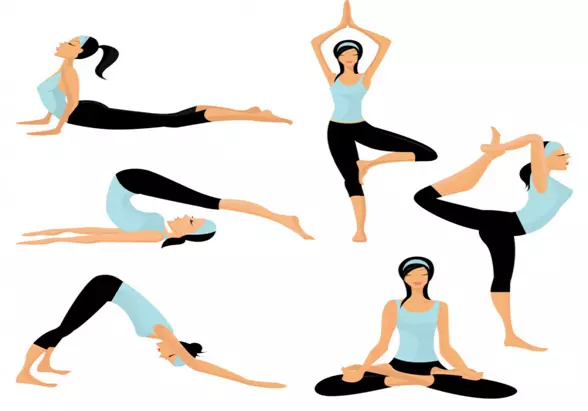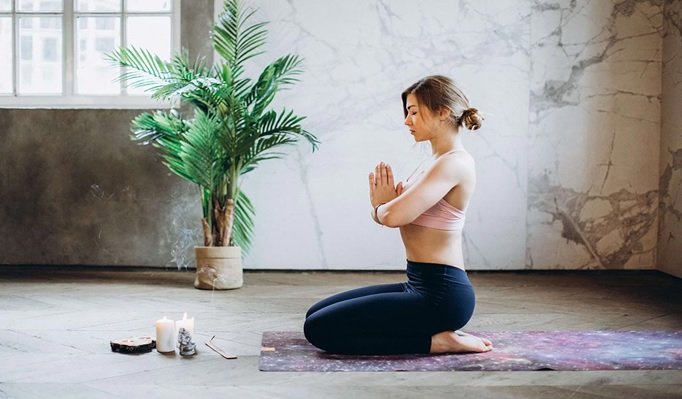In this article
- Essential Components of a Yoga Starter Kit
- Top Yoga Kit Brands for 2024
- Choosing the Right Kit for Your Practice
- Must-Have Features for Beginners
- How Much Does a Good Yoga Starter Kit Cost?
- Expert Reviews and Recommendations
- Common Mistakes to Avoid
Ready to start your yoga journey but feeling overwhelmed by all the gear choices? You’re not alone. With countless yoga accessories flooding the market in 2024, finding the perfect starter kit can feel like searching for a needle in a meditation cushion. 🧘♀️
Whether you’re drawn to yoga for flexibility, stress relief, or overall wellness, having the right equipment from day one can make the difference between sticking with your practice and giving up too soon. From slippery mats that compromise your poses to inadequate props that limit your progress, using the wrong gear can turn your peaceful practice into a frustrating experience.
In this comprehensive guide, we’ll walk you through everything you need to know about choosing your first yoga kit. You’ll discover the essential components every beginner needs, explore top-rated brands for 2024, and learn expert tips to make a smart investment in your wellness journey. Let’s unroll your path to successful yoga practice! 🌟
Essential Components of a Yoga Starter Kit
High-Quality Yoga Mat Specifications
A premium yoga mat serves as your foundation for practice. Your ideal mat should be 6mm thick for optimal cushioning while maintaining stability. Look for mats with non-slip surfaces and eco-friendly materials like natural rubber or TPE.
| Feature | Recommended Specification |
|---|---|
| Thickness | 6mm |
| Length | 72 inches (183cm) |
| Width | 24 inches (61cm) |
| Material | Natural rubber/TPE |
| Grip | Double-sided texture |
Yoga Blocks and Their Uses
Your starter kit should include two foam or cork blocks. These props help you maintain proper form and access challenging poses safely. Blocks measuring 9x6x4 inches provide versatile height options for different modifications.
Yoga Straps for Proper Alignment
Include an 8-foot cotton strap with a D-ring or quick-release buckle in your kit. You’ll use this prop to deepen stretches and improve flexibility, particularly in forward bends and shoulder openers.
Carrying Bag Options
Select a spacious bag that accommodates your mat and props. Look for these essential features:
- Adjustable shoulder strap
- External mat holder
- Water-resistant material
- Multiple compartments for blocks and straps
- Ventilated design to prevent odors
When choosing your beginner yoga kit, ensure each component meets these specifications for a comfortable and safe practice. Quality materials and proper dimensions will support your development as you explore different poses and sequences. Now that you understand the essential components, let’s explore the top yoga kit brands available in 2024.
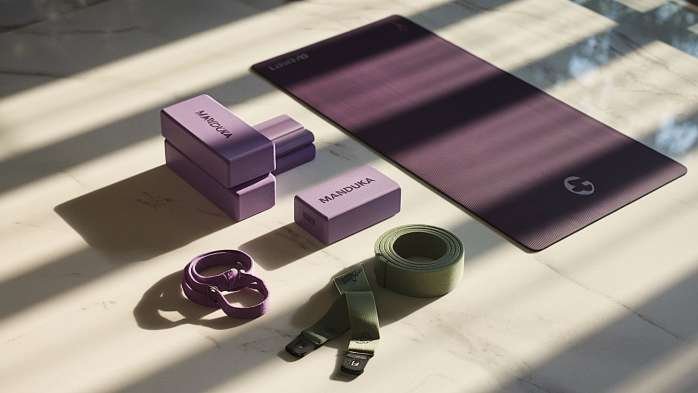
Top Yoga Kit Brands for 2024
Premium Kit Collections
You’ll find exceptional quality and comprehensive offerings from leading brands that have mastered the art of premium yoga kits. Manduka’s PRO Bundle stands out with its lifetime-guaranteed mat, cork blocks, and alignment straps. Lululemon’s Yoga Essentials Kit delivers studio-quality accessories with their signature attention to detail. Alo Yoga’s Warrior Set combines style with functionality, featuring their renowned anti-slip mat and premium props.
| Brand | Key Features | Price Range |
|---|---|---|
| Manduka PRO | Lifetime warranty, eco-certified materials | $200-250 |
| Lululemon | Premium grip technology, antimicrobial properties | $180-220 |
| Alo Yoga | Fashion-forward design, premium materials | $190-230 |
Budget-Friendly Options
Your yoga journey doesn’t need to break the bank. Gaiam’s Complete Beginner’s Kit offers excellent value while maintaining quality standards. YogaAccessories Basic Kit provides all essentials at an accessible price point. BalanceFrom’s All-Purpose Kit combines durability with affordability.
Sustainable and Eco-Friendly Choices
Your commitment to yoga can align with environmental consciousness through brands like Jade Yoga, offering kits made from natural rubber and sustainable materials. Cork Yoga’s Complete Set features biodegradable components, while Yogamatters Eco Kit uses recycled materials and plastic-free packaging. These brands prioritize both your practice and planetary well-being.
Now that you’re familiar with the top brands, let’s explore how to select the perfect kit for your specific needs and practice style.
Choosing the Right Kit for Your Practice
Material Considerations
When selecting your yoga starter kit, material quality directly impacts your practice. Most beginner-friendly mats feature PVC, TPE, or natural rubber construction. PVC mats offer excellent grip and durability, while TPE provides eco-friendly cushioning. Natural rubber mats deliver superior grip but may not suit those with latex allergies.
Size and Portability
Your yoga kit should align with your lifestyle and practice space. Standard yoga mats measure 68″ x 24″, ideal for most practitioners. Consider these portability factors:
- Travel-friendly thickness (4-6mm)
- Foldable or rollable design
- Carrying strap inclusion
- Total kit weight (aim for under 5 pounds)
Price-Quality Balance
Invest wisely in your beginner yoga kit without overspending. Quality starter kits typically range from $40-$100, offering essential components while ensuring durability. Premium features like antimicrobial treatments or extra accessories may increase costs but provide long-term value.
Durability Factors
Focus on these key durability indicators:
- Stitching quality on blocks and straps
- Mat thickness and density
- Material wear resistance
- Warranty coverage
- User reviews and ratings
Style Preferences
While functionality comes first, your yoga kit should reflect your personal style. Many beginner-friendly kits offer various color options and patterns without compromising quality. Choose designs that motivate you to maintain your practice consistently.
Now that you understand what to look for in a yoga kit, let’s explore specific features that beginners should prioritize in their first set of equipment.
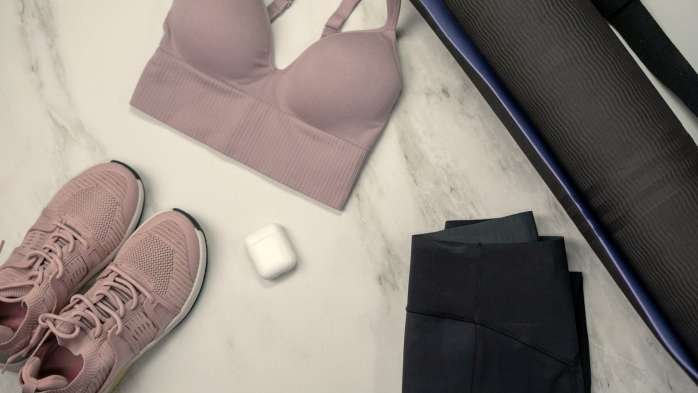
Must-Have Features for Beginners
Non-Slip Surface Technology
Your yoga journey begins with stability and safety. A high-quality non-slip surface is crucial for maintaining poses without unwanted movement. Look for mats featuring:
- Deep texture patterns
- Moisture-wicking technology
- Grip-enhancing surface treatments
- Double-sided traction designs
Proper Thickness and Support
The right amount of cushioning protects your joints while maintaining stability. Here’s what you need in terms of thickness:
| Practice Type | Recommended Thickness | Benefits |
|---|---|---|
| General Practice | 4-6mm | Balance of cushioning and stability |
| Joint Sensitivity | 6-8mm | Extra protection for knees and wrists |
| Travel Yoga | 2-3mm | Portable and lightweight |
Easy Maintenance
Your yoga kit should be simple to clean and maintain. Essential features include:
- Antimicrobial treatments to prevent odor
- Quick-drying materials
- Machine-washable props
- Stain-resistant surfaces
- Easy-to-wipe materials
When selecting your yoga kit components, prioritize materials that won’t absorb sweat or retain odors. High-quality PVC, TPE, or natural rubber mats typically offer the best balance of durability and easy maintenance. Make sure your kit includes props that can be quickly cleaned with mild soap and water.
Now that you understand the essential features for beginners, let’s explore how much you should expect to invest in a quality yoga starter kit.
How Much Does a Good Yoga Starter Kit Cost?
You’ll find yoga starter kits across various price points, but investing in quality equipment is crucial for your practice. A basic, high-quality yoga starter kit typically ranges from $50 to $150, depending on the included components and brand reputation. While you might spot kits priced under $30, these often compromise on material quality and durability.
Mid-range kits, priced between $75 and $100, usually offer the best value for beginners. These kits generally include a durable mat with proper thickness, two yoga blocks, a strap, and sometimes extras like a mat towel or carrying bag. The materials used in this price range are typically eco-friendly and built to last.
Premium yoga starter kits, ranging from $100 to $200, often feature advanced materials like natural rubber mats, cork blocks, and organic cotton straps. While these might seem expensive initially, they’re a worthwhile investment if you’re committed to developing a long-term practice. These high-end kits typically last years with proper care, making them more cost-effective in the long run.
Remember that individual pieces can be more expensive when purchased separately. A quality yoga mat alone can cost between $40 and $80, while blocks typically range from $10 to $20 each. By choosing a complete kit, you’ll often save 20-30% compared to buying items individually.
Now that you understand the cost considerations, let’s explore expert reviews and recommendations to help you make an informed decision about specific yoga starter kits.
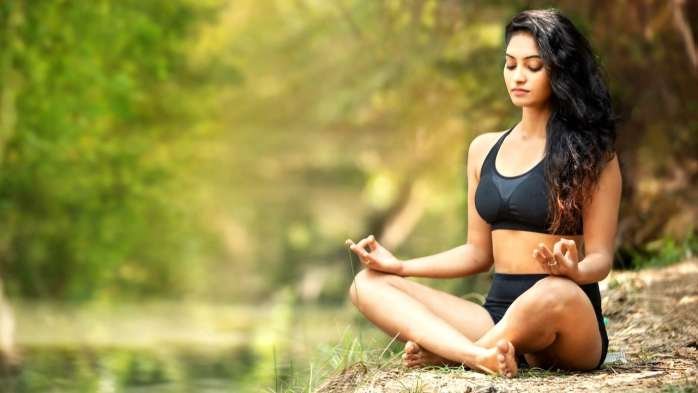
Expert Reviews and Recommendations
Professional Instructor Insights
Leading yoga instructors consistently recommend starter kits that prioritize quality and comfort for beginners. Your first yoga kit should include a non-slip mat with adequate cushioning, durable blocks, and a sturdy strap. Expert instructors emphasize choosing materials that maintain grip even during sweaty sessions.
Key recommendations from certified instructors:
- Choose a mat thickness between 4-6mm for optimal balance and support
- Look for natural rubber or TPE mats for eco-friendly durability
- Select lightweight blocks that can withstand regular practice
- Invest in adjustable straps with secure metal D-rings
User Experience Analysis
Real beginners praise kits that offer versatility and easy maintenance. You’ll find the most satisfaction with products that include clear care instructions and storage solutions. User reviews highlight the importance of mat texture and block density for building confidence in poses.
Popular user-validated features:
- Non-slip surfaces that work on various flooring
- Alignment markers on mats for proper positioning
- Moisture-resistant materials that prevent odors
- Comfortable grip surfaces on blocks and straps
Value for Money Assessment
Your investment in a quality starter kit typically ranges from $50-$150. Higher-priced kits often include additional accessories and premium materials that justify the cost through extended durability and enhanced performance.
Warranty and Support Details
Look for brands offering at least 12-month warranties on their starter kits. You’ll benefit most from companies providing detailed product care guides and responsive customer service. Several top manufacturers also offer free replacement parts during the warranty period.
Now that you understand what experts and users value most, let’s explore common mistakes to avoid when selecting your first yoga kit.
Common Mistakes to Avoid
Material Misconceptions
You might be tempted to opt for the cheapest materials when starting your yoga journey, but this can significantly impact your practice. Many beginners mistakenly choose PVC mats thinking they’re getting a good deal, only to find them slippery and less durable. Instead, focus on eco-friendly TPE or natural rubber mats that offer better grip and longevity.
Size Selection Errors
When selecting your yoga kit components, size matters more than you might think. A common error is choosing a standard-sized mat without considering your height or practice style. Your yoga mat should extend at least 6 inches beyond your height for full-body poses. Similarly, picking props like blocks and straps without considering your flexibility level can hinder your progress. Remember that taller practitioners might need wider mats and longer straps for optimal support.
Budget Allocation Tips
While it’s tempting to spend most of your budget on a premium mat, you need to distribute your investment wisely across all essential items. Many beginners make the mistake of overlooking the importance of quality props. Allocate about 50% of your budget to a good mat, 25% to blocks and straps, and the remaining 25% to accessories like towels and bags. This balanced approach ensures you have all the necessary tools for a successful practice.
Now that you understand these common pitfalls, you’ll be better equipped to select the right yoga starter kit that meets your needs and supports your practice journey effectively.
Check out our YouTube channel for more motivational mindfulness videos!
Starting your yoga journey with the right equipment can make a significant difference in your practice and overall experience. By choosing a high-quality starter kit that includes essential items like a non-slip mat, comfortable blocks, and a sturdy strap, you’re setting yourself up for success from day one. Remember to prioritize quality over price, but keep in mind that you don’t need to break the bank to get reliable yoga gear.
As you begin your yoga practice, focus on selecting a kit that matches your specific needs and goals. Consider factors like mat thickness, material durability, and portability when making your choice. Whether you opt for a premium brand or a budget-friendly alternative, ensure your kit includes all the fundamental pieces that will support your growing practice. Take the first step today by investing in a starter kit that resonates with your practice style and watch your yoga journey unfold with confidence.
